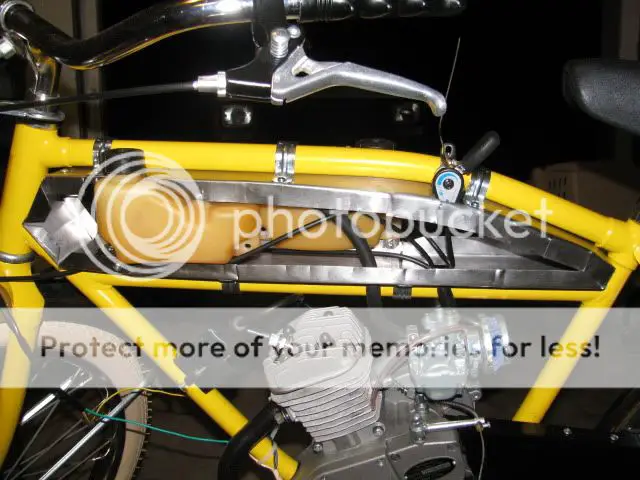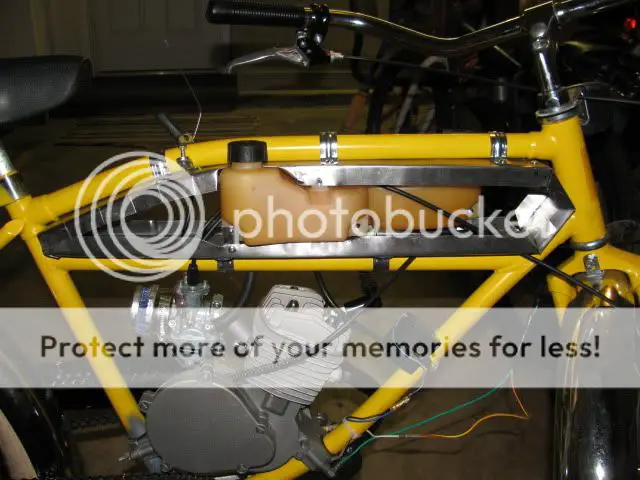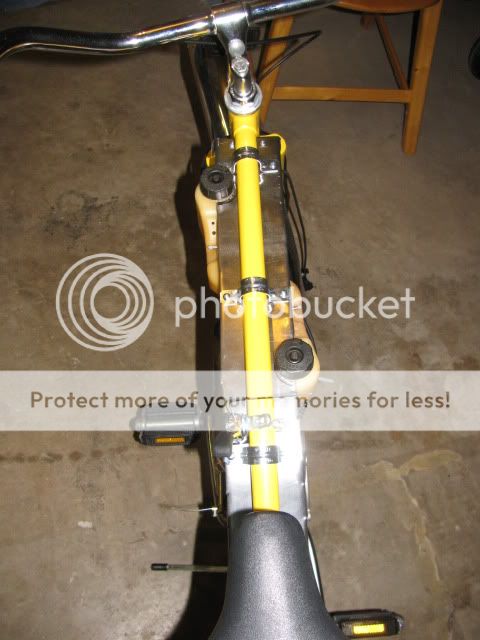Howdy,
I think it is about time to post photos of my nearly completed Cyclone tribute bike, so here goes.
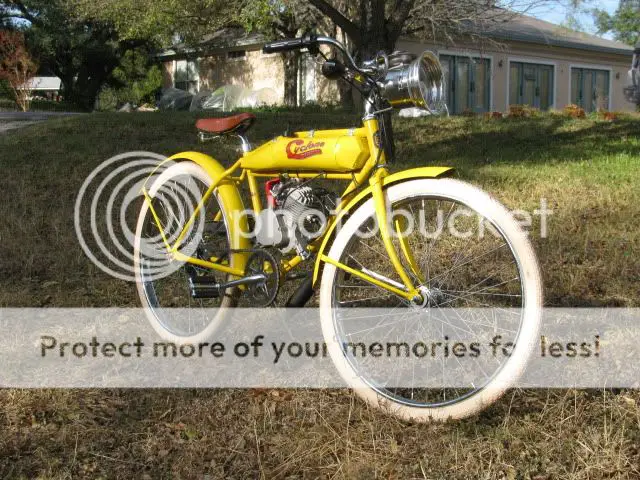
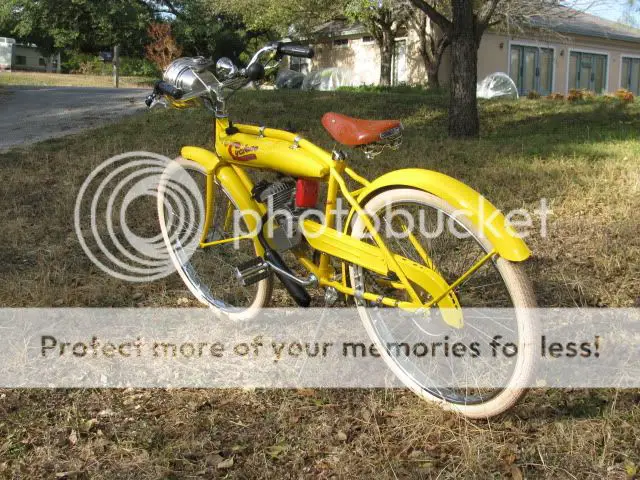
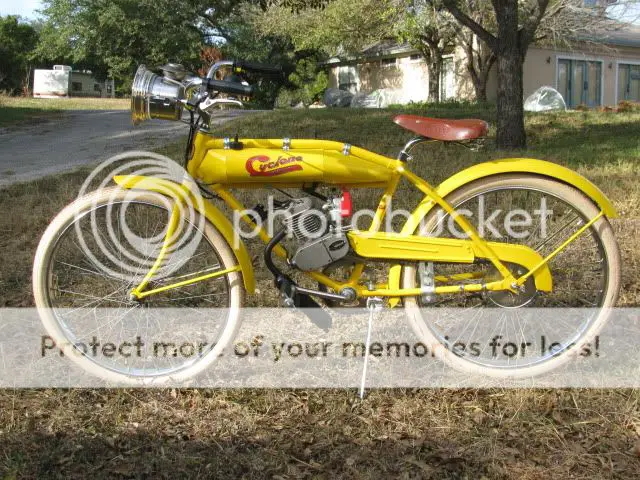
Here are some photos of the real thing:

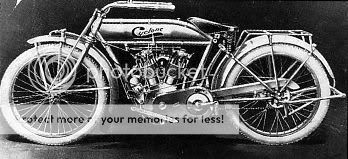
By the way, since these photos were taken, I've added a replica taillight that I made which looks like a carbide taillight, but is actually made from a LED flashlight and the vent stack off of a kerosene lantern.
This was my first build, but I benefited greatly from the experience of Hoodoo, as well as from all of you on the motorized bicycle forums. As you can tell, I started out with a Worksman Newsboy and added a Grubee Skyhawk engine. One of my main goals was to avoid welding, as I don't know how.
I am currently trying to correct the chain rubbing on the fender, but am finding the tolerances are very close and tough to get just right. The chains on both sides are rubbing the fender, despite the fact that I significantly notched the fender on the powered chain side when I first installed the motor kit. I can bend the fender on the pedal chain side in further, but I've only got a small gap to work with, split over both sides. Even if I get the fender adjusted perfectly, the long chains allow a bit of side to side motion that may still let the chains slap the fender occasionally.
I intend to paint the rims and add a rear-wheel mounted dropstand next (removing the modern kickstand of course). I am also in the planning stages for making a rear luggage rack that resembles the historic one and will let me carry a useful load. - In theory these bikes are intended to allow us to carry tools and misc. items back and forth around the Kingsbury Aerodrome. (More info here: Pioneer Flight Museum )
Potential future modifications include replacing the stock handlebar stem with a more historic looking one, installing a springer fork, swapping the lay back seat post to one that lets me lower the seat a bit further, replacing the stock air filter with an open element filter, and swapping to an expansion exhaust.
MarkV
I think it is about time to post photos of my nearly completed Cyclone tribute bike, so here goes.



Here are some photos of the real thing:

By the way, since these photos were taken, I've added a replica taillight that I made which looks like a carbide taillight, but is actually made from a LED flashlight and the vent stack off of a kerosene lantern.
This was my first build, but I benefited greatly from the experience of Hoodoo, as well as from all of you on the motorized bicycle forums. As you can tell, I started out with a Worksman Newsboy and added a Grubee Skyhawk engine. One of my main goals was to avoid welding, as I don't know how.
I am currently trying to correct the chain rubbing on the fender, but am finding the tolerances are very close and tough to get just right. The chains on both sides are rubbing the fender, despite the fact that I significantly notched the fender on the powered chain side when I first installed the motor kit. I can bend the fender on the pedal chain side in further, but I've only got a small gap to work with, split over both sides. Even if I get the fender adjusted perfectly, the long chains allow a bit of side to side motion that may still let the chains slap the fender occasionally.
I intend to paint the rims and add a rear-wheel mounted dropstand next (removing the modern kickstand of course). I am also in the planning stages for making a rear luggage rack that resembles the historic one and will let me carry a useful load. - In theory these bikes are intended to allow us to carry tools and misc. items back and forth around the Kingsbury Aerodrome. (More info here: Pioneer Flight Museum )
Potential future modifications include replacing the stock handlebar stem with a more historic looking one, installing a springer fork, swapping the lay back seat post to one that lets me lower the seat a bit further, replacing the stock air filter with an open element filter, and swapping to an expansion exhaust.
MarkV




